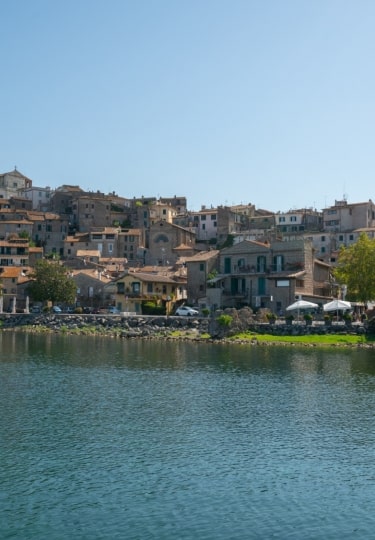It would take a lifetime to see everything Rome has to offer, from its historic sites to its many fine restaurants. You’ll find just as much variety when you start thinking about the best day trips from Rome.
There are beautiful hilltop towns such as Orvieto, or Genzano di Roma. And there are unmissable archeological sites, such as Ostia Antica.
Or places to escape into nature, such as Abruzzo, or Monti della Laga national parks. And, of course, there’s the lakeside at Bracciano, or seaside at Santa Marinella.
Here is a guide to the 14 best day trips from Rome.
Civitavecchia
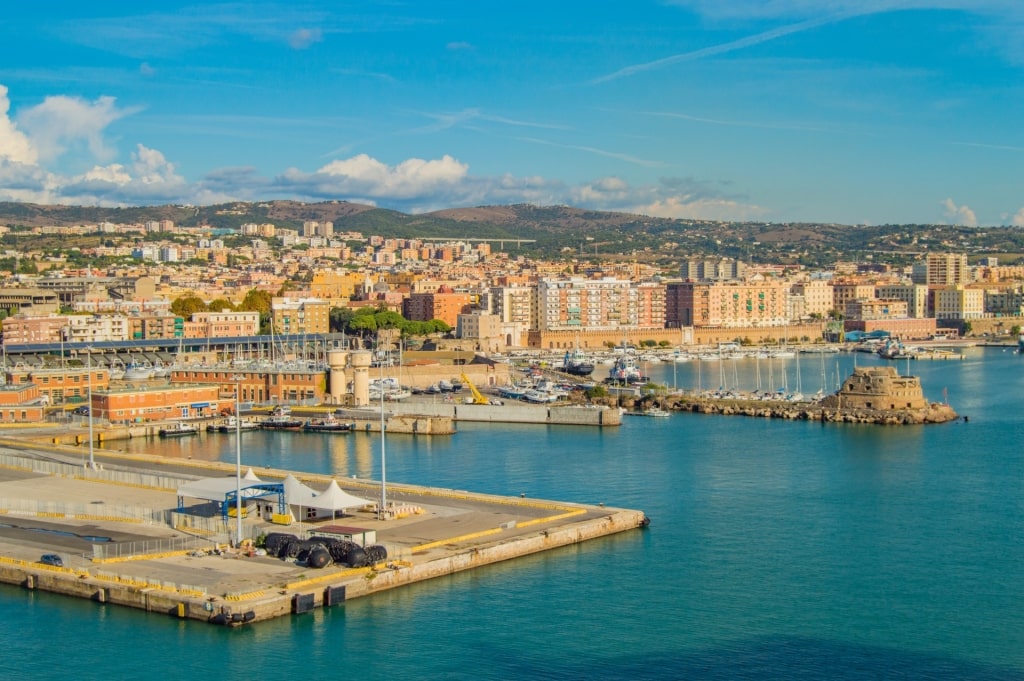
Civitavecchia
Dating back to the second century, Civitavecchia literally means “ancient town”. Built as Rome’s main port, it is always busy with ships.
You can find out more about the history of this Italian cruise port at the City Museum. This holds such treasures as a first-century statue of Apollo, probably a reproduction of the Colossus of Rhodes.
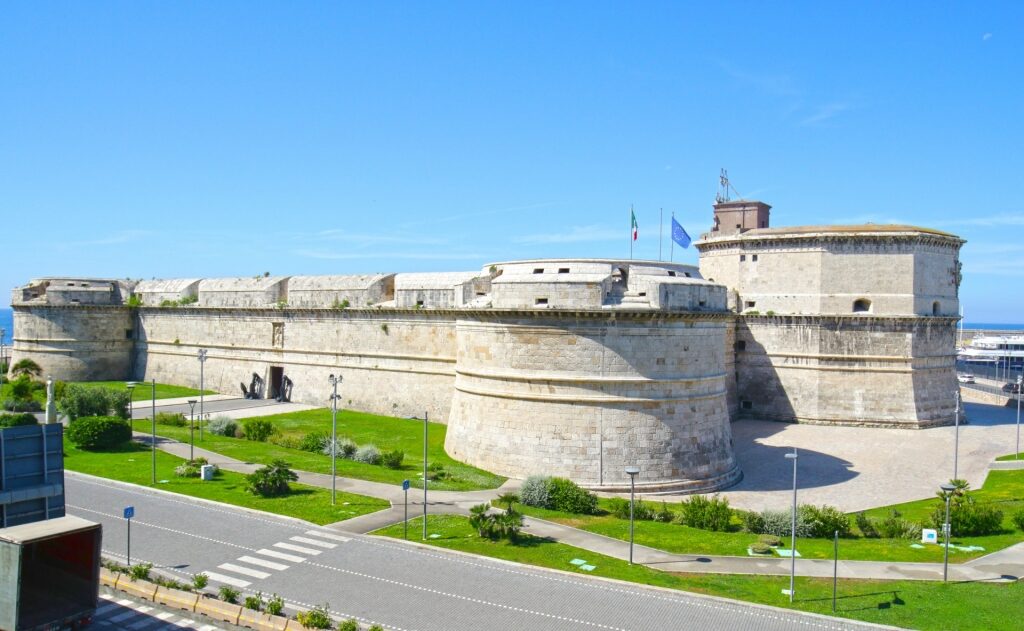
Fort Michelangelo
Fort Michelangelo nearby is a major sight for its tower thought to have been designed by the great artist himself. The massive fort protected the Lazio coast against pirates.
Other attractions include the Baths of Trajan, with its gardens, and a pretty medieval center. As Civitavecchia is a coastal town, you’ll want to sample the seafood in specialties such as fish soup or stuffed squid.
Castel Gandolfo
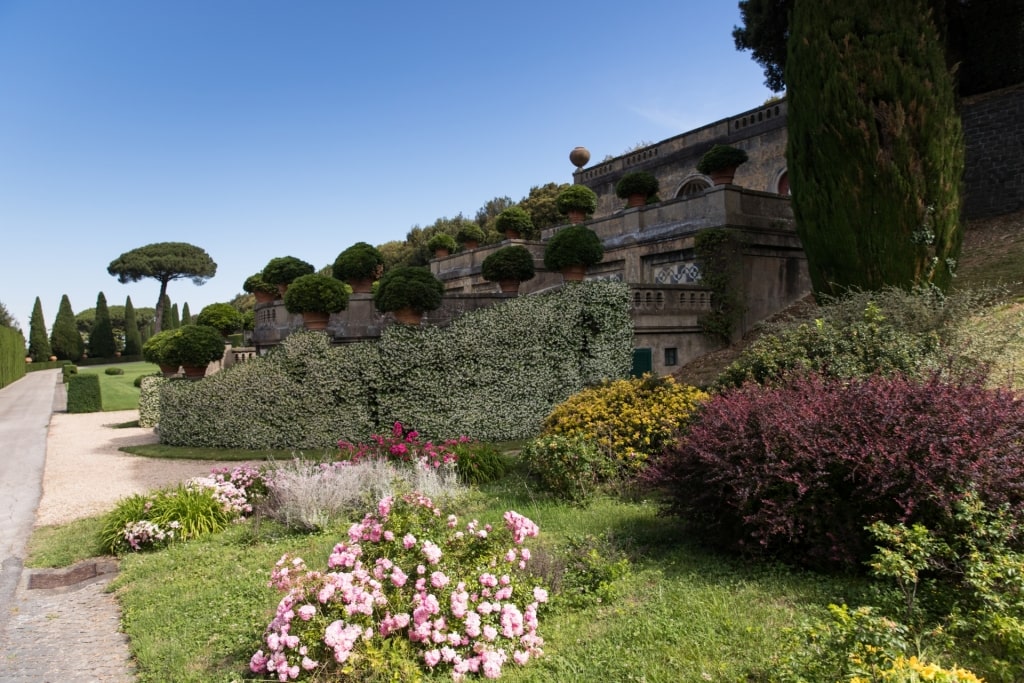
Castel Gandolfo
Only 18 miles southeast of Rome, Castel Gandolfo has been the summer residence of the popes since 1628. Every pope since then (with the exception of Pope Francis) has come to escape Rome’s heat.
The Papal Palace, and its ornamental Barberini Gardens, are now a major draw for visitors. One quirky sight amid the other splendors is a collection of pope-mobiles from over the years.
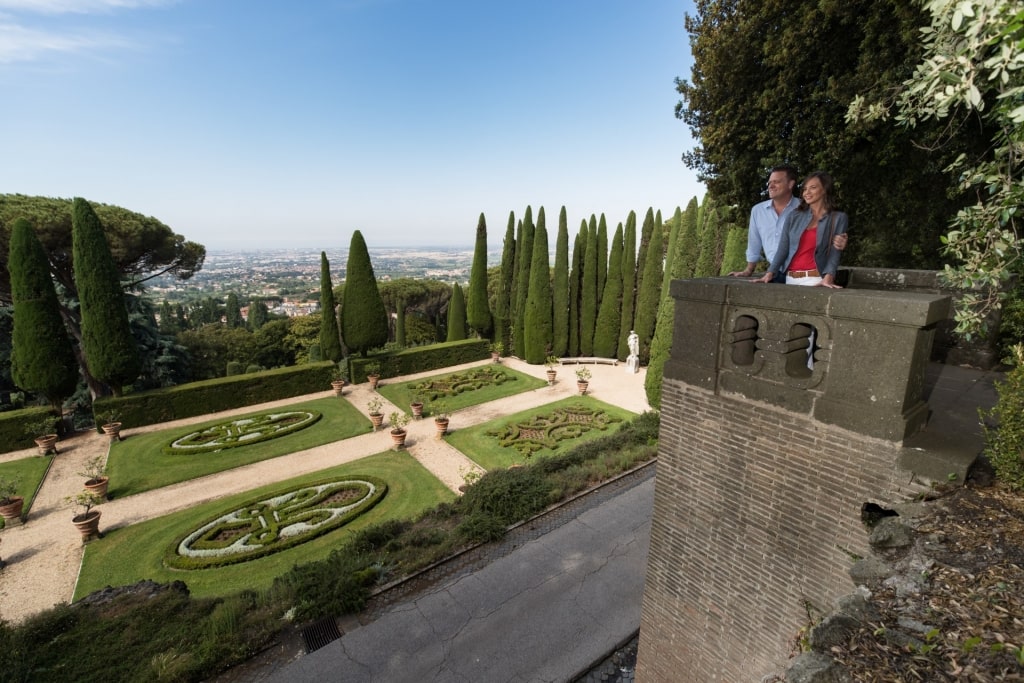
Castel Gandolfo
After the papal Villa, you’ll want to see the first-century Villa of Domitian, as well as the town itself. The many ornate local churches include the beautiful Chiesa della Madonna del Lago (Church of Our Lady of the Lake).
The church sits by Lake Albano, which is lined with restaurants, and popular for boating. The lake and the surrounding countryside add a lovely setting to one of the prettiest towns in Italy.
Anguillara Sabazia
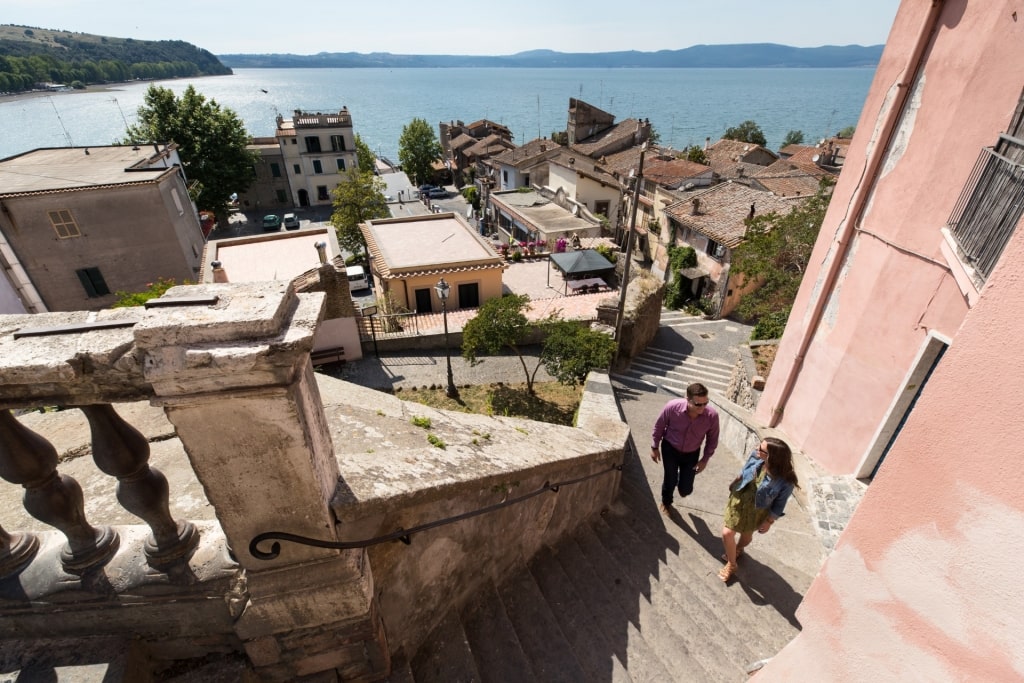
Anguillara Sabazia
Romans have been building holiday villas here on Lake Bracciano since at least the first or second century BC. Anguillara Sabazia and its two neighboring towns are still among the most popular day trips from the capital.
You can see the attraction on the lakeshore Viale Reginaldo Belloni, a site for many restaurants. The views of the lake, the distant hills, and back to the town itself are beautiful.
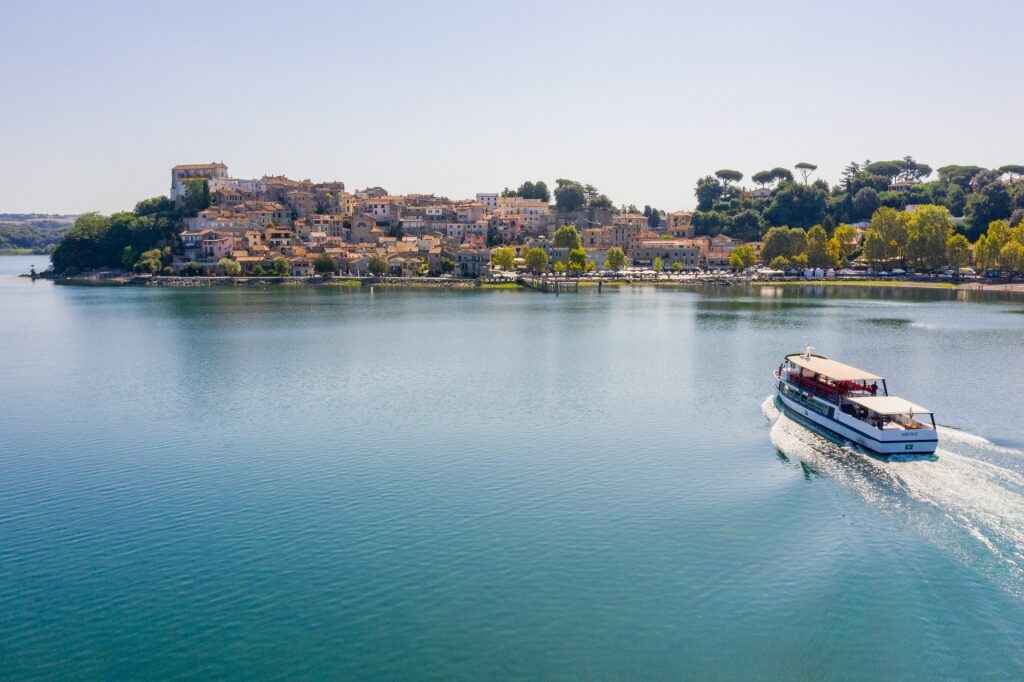
Lake Bracciano
One of the most beautiful natural wonders in Italy, the lake is great for boating or kayaking, and also has beaches for swimming. Sightseers head for the several interesting churches, the Fountain of the Eels, and other medieval remnants.
The heart of the town is Piazza del Molo, where people-watching from a café is the usual Italian art form. Fans of Ray Romano will also want to enjoy the local gelato featured in his sitcom.
Bracciano
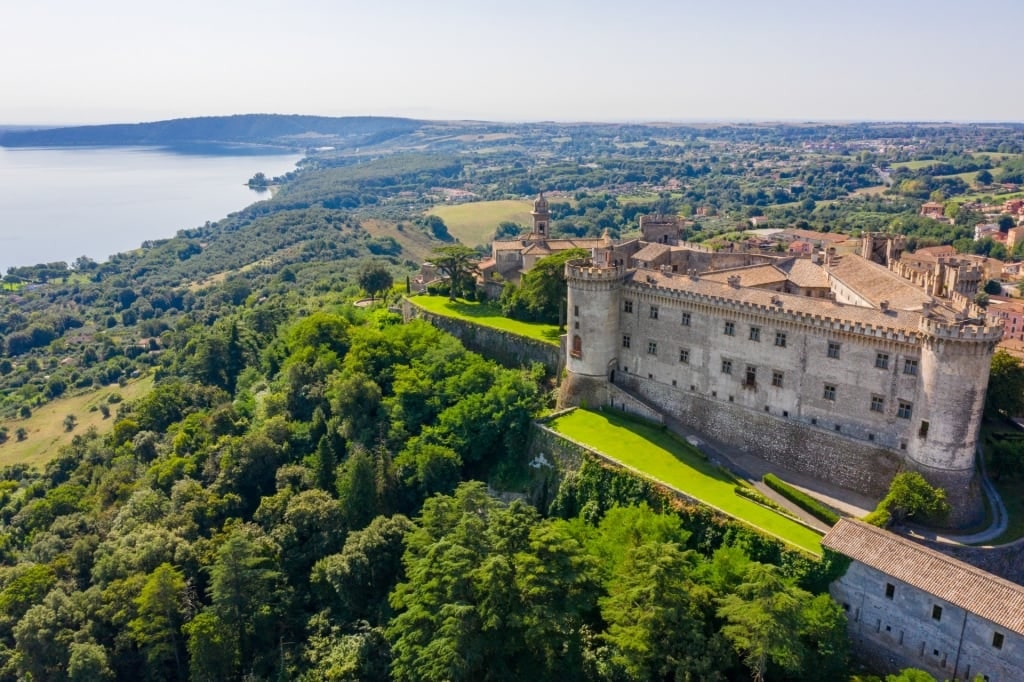
Bracciano
If the majestic castle towering over Bracciano seems familiar, that may be because actor Tom Cruise used it as a wedding venue in 2006. Fortunately, the worldwide paparazzi were seen off as quickly as any other besiegers over the centuries.
The 15th-century Castello Orsini-Odescalchi remains an interesting place to visit. It’s one of the best-preserved Renaissance castles in Italy.
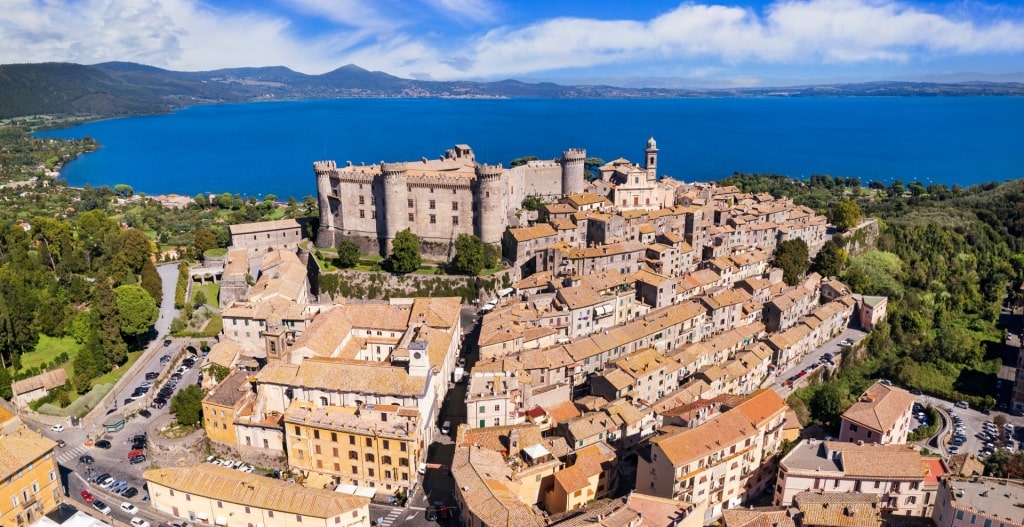
Castello Orsini-Odescalchi, Bracciano
Spread out below it, the old town also retains its medieval layout. Get lost in its cobbled streets, popping out into a shaded piazza to find a cozy restaurant or café.
Several lovely churches are a given, but most visitors had for the lake. There are a number of exclusive restaurants here with great views over its clear waters.
Orvieto
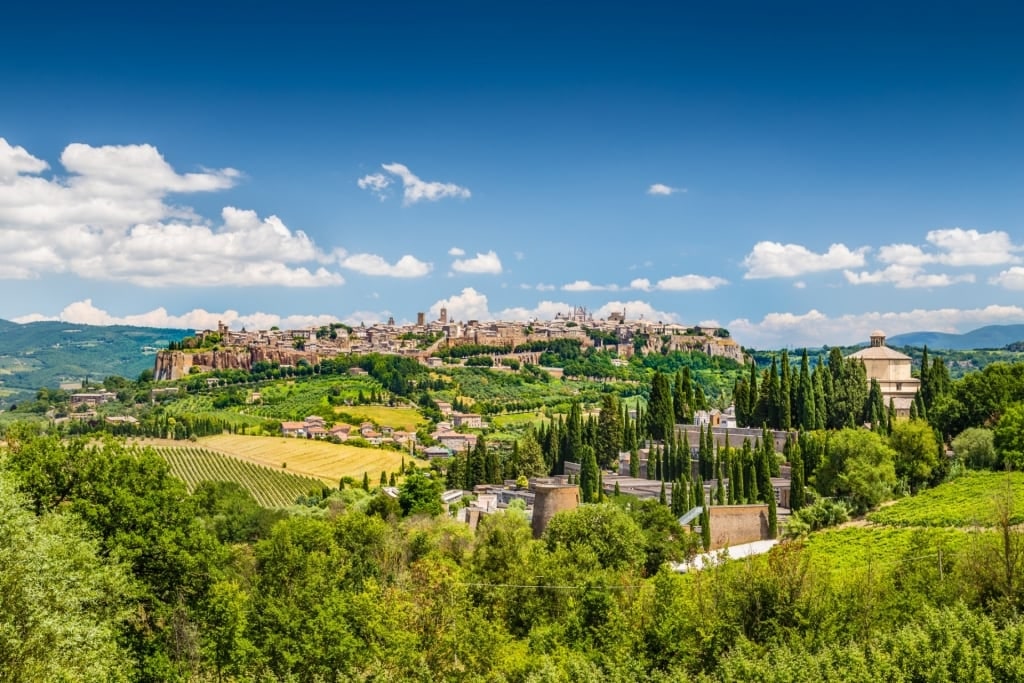
Orvieto
About 90 minutes northwest of Rome, Orvieto is another lovely ancient hill town whose setting makes it one of the best day trips from Rome. Its history also has left it with notable Etruscan, Roman, and medieval buildings.
The town sits on a high plateau that is pierced with storage caves and wells. The most famous is the 60-feet-deep St. Patrick’s well, named for its intertwining steps resembling a Celtic knot.
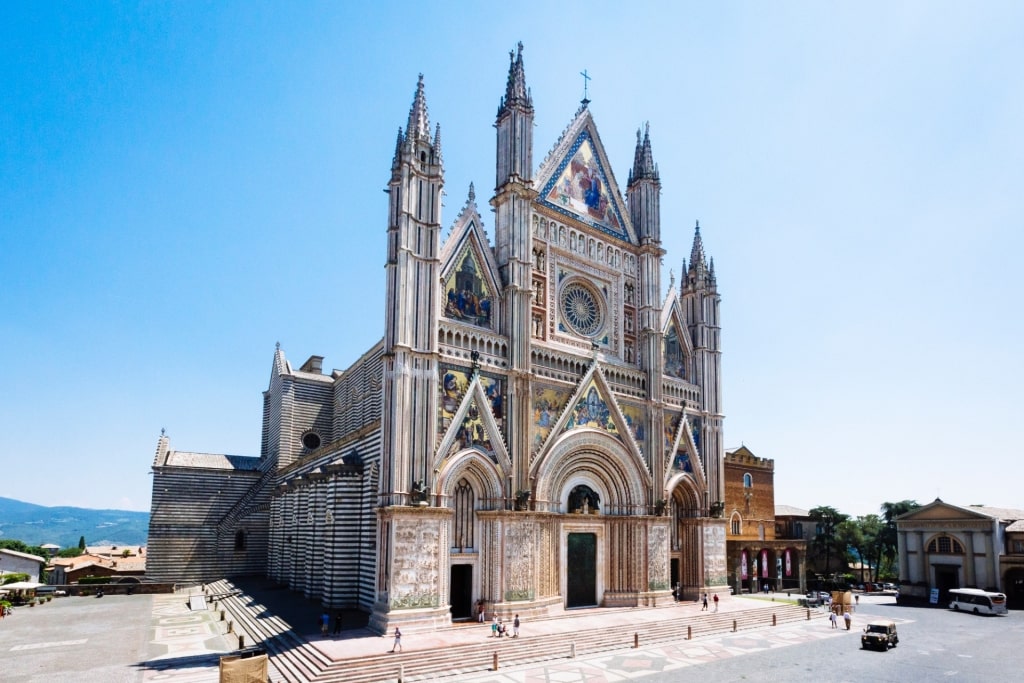
Duomo, Orvieto
The Duomo dominates the skyline of this hidden Italian gem with its Gothic architecture and ornate rose window. It’s only one of many churches full of frescoes and other artistic treasures.
The town has a number of major festivals, most notably its annual jazz festival. However, the food, wine, and art scene is lively all year round.
Ostia Antica
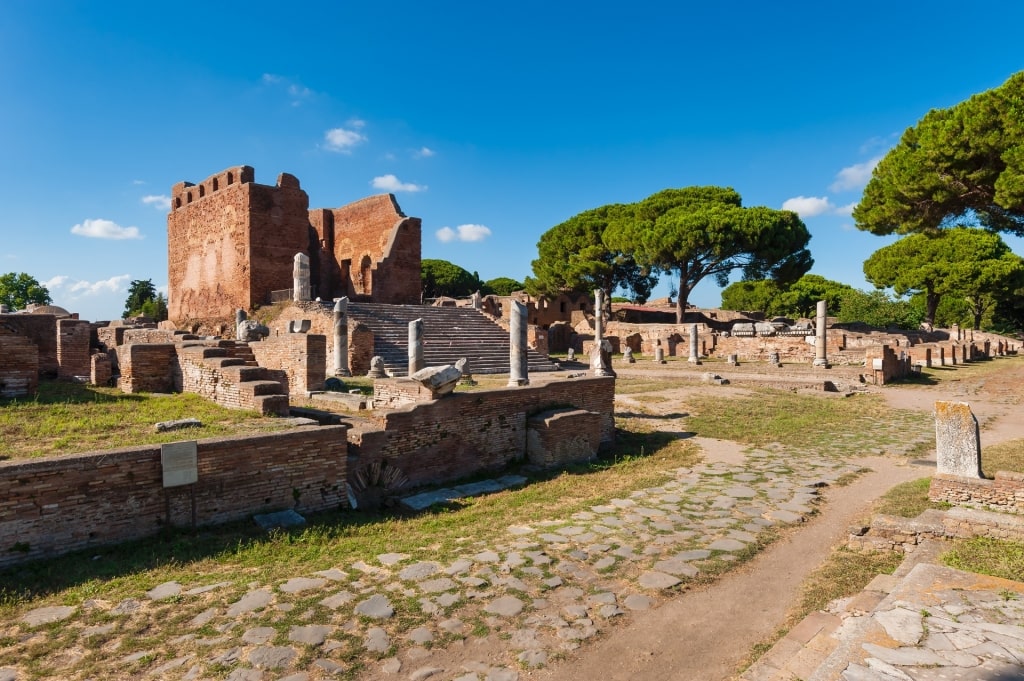
Ostia Antica
The sprawling 10,000-acre site of Ostia Antica needs a good guide for you to appreciate it fully. As the port of Ancient Rome, the town once had 50,000 inhabitants, and much of it is as well preserved as Pompeii.
Ostia means “Mouth” and its harbor was near the entrance to the River Tiber. The river began silting up around 50 BCE, and the site is now two miles from the sea.
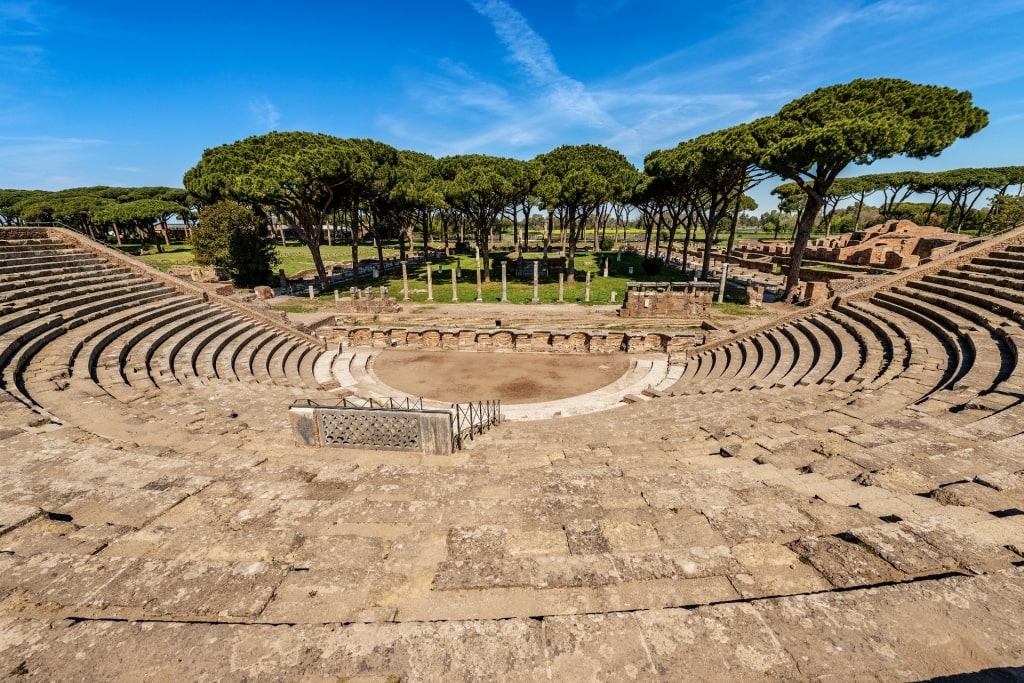
Ostia Antica
Start at the Forum, and take in such sights as the well-preserved theater, apartment blocks, and the many “fast food” shops. Shipping companies are identified by mosaics outside their offices in the Piazza delle Corporazioni.
There are also several luxurious villas, complete with frescoes, and baths. A small museum has many interesting artifacts discovered on site by archaeologists.
Read: Explore Rome Off the Beaten Path
Tivoli
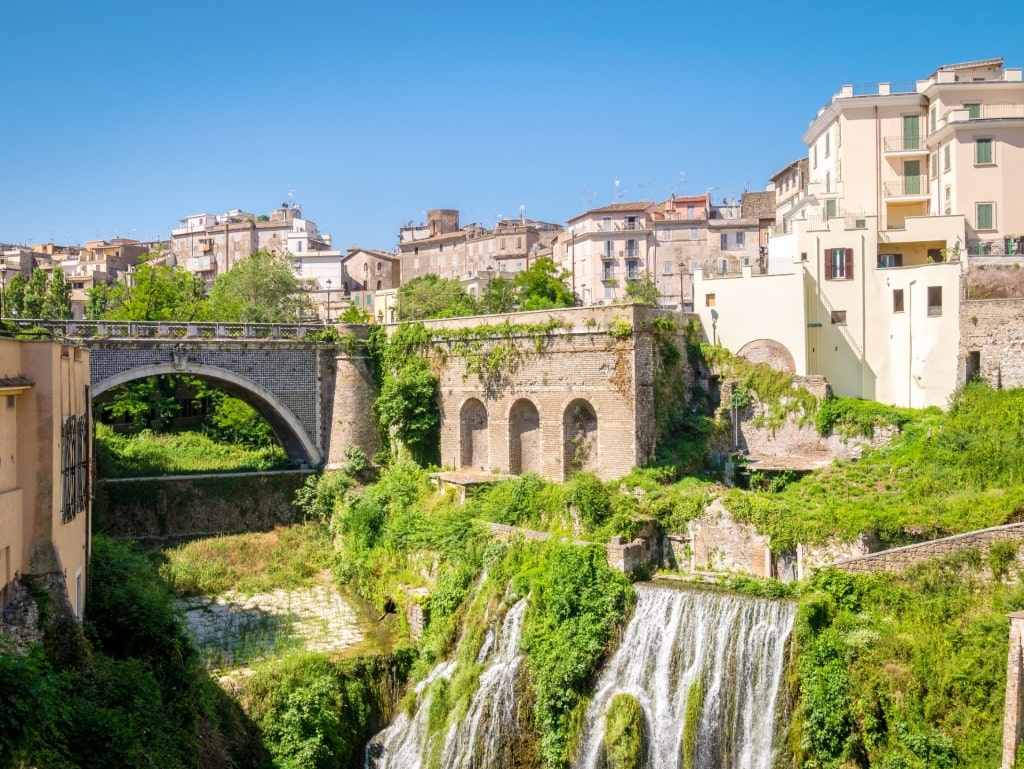
Tivoli
Tivoli, 45 minutes from Rome, is a beautiful town, famous for its waterfalls. It’s also home to two major Unesco sites—Villa Adriana (Hadrian’s Villa), and Villa d’Este—both of which are worth visiting on their own.
Villa Adriana was built by Emperor Hadrian (76-138 AD) in the Sabine Hills. Covering seven square miles, it was one of the largest in ancient Rome.
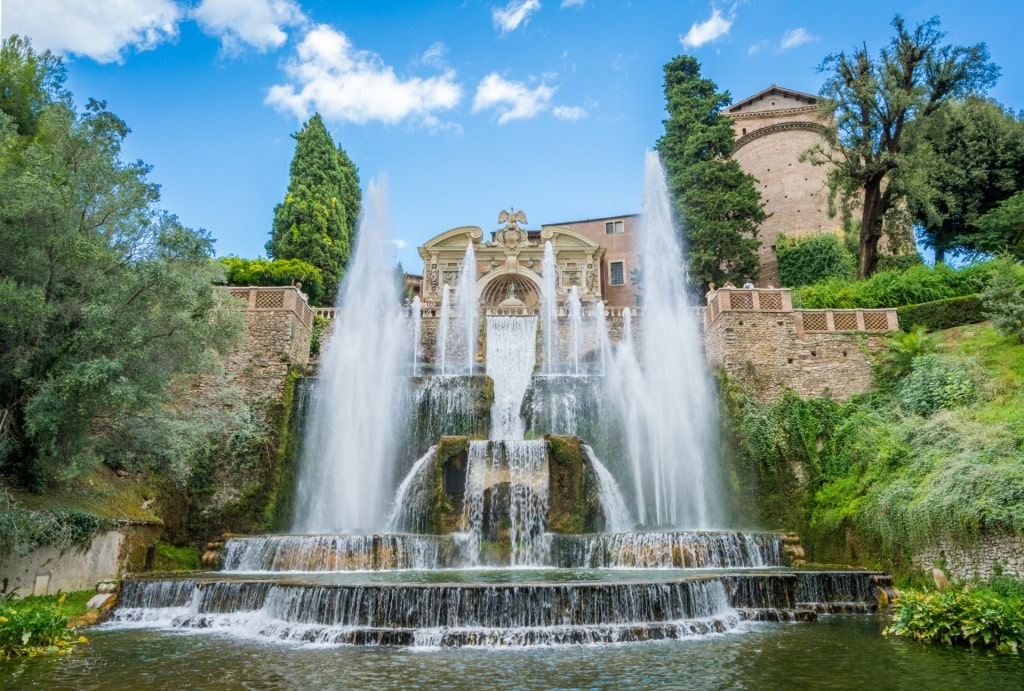
Villa d’Este, Tivoli
Much of the marble and statuary was stripped for Villa d’Este, built by Cardinal d’Este in the 1560s. Many other artworks have made their way to museums worldwide, but enough remains to take several hours to visit.
Villa d’Este is remarkable, and its Italian gardens even more so. Taking a decade to lay out, they contain lots of ornate fountains—very cooling on a hot day.
Cerveteri
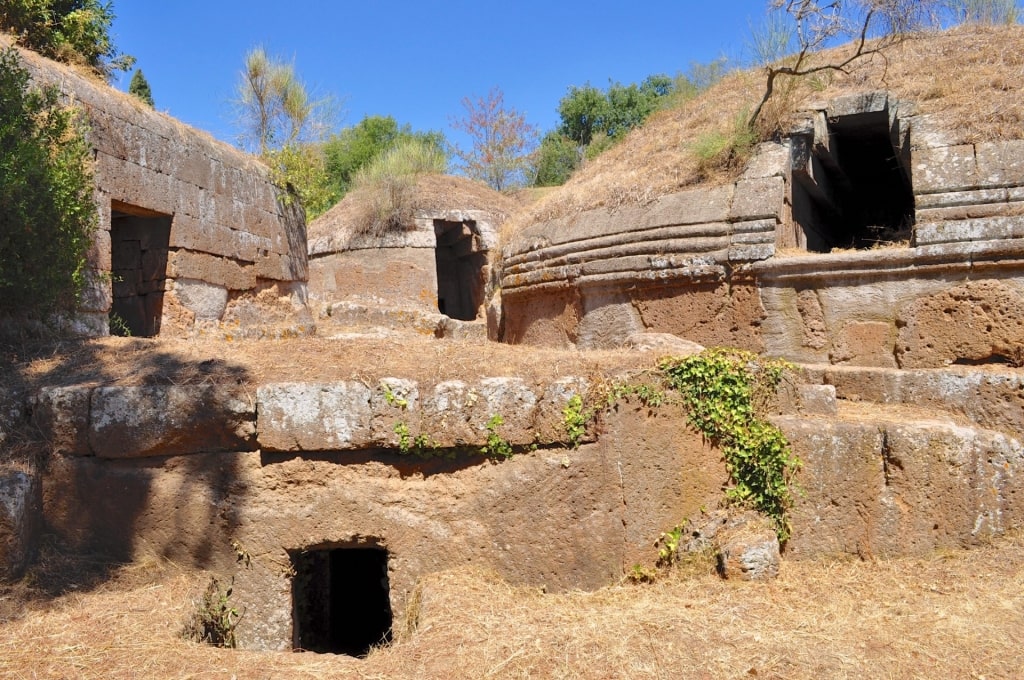
Cerveteri
One of Italy’s most impressive Etruscan sites, Cerveteri has thousands of tombs dating back to the ninth century BC. The Necropolis of Banditaccia, spread across acres of rolling hillside, is recognized by UNESCO for its historic significance.
This “city of the dead”—only 50 minutes from Rome—is laid out with roads, gutters, and sidewalks. Many of the tombs are decorated with frescoes or other paintings that illustrate Etruscan life.
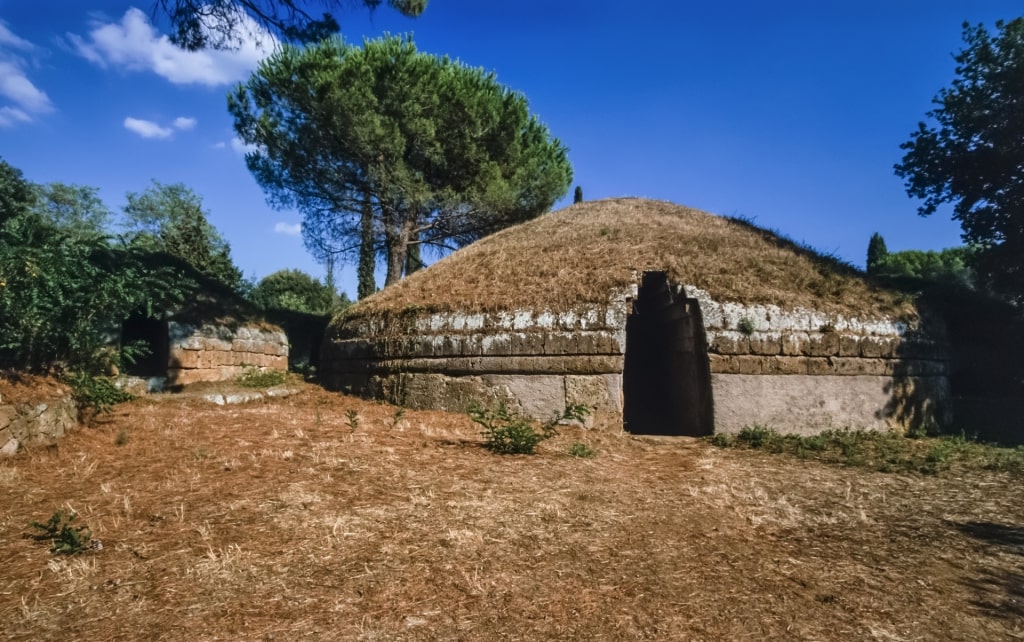
Cerveteri
Most tombs were used by generations of the same families, and accumulated treasures in pottery, metalwork, and jewelry. You can see some of these artifacts, many of them imported luxuries, in the Museo Nazionale Cerite.
The museum is in a picturesque castle and has recently been refurbished. A lively multimedia presentation helps bring nine centuries of history to life.
Viterbo
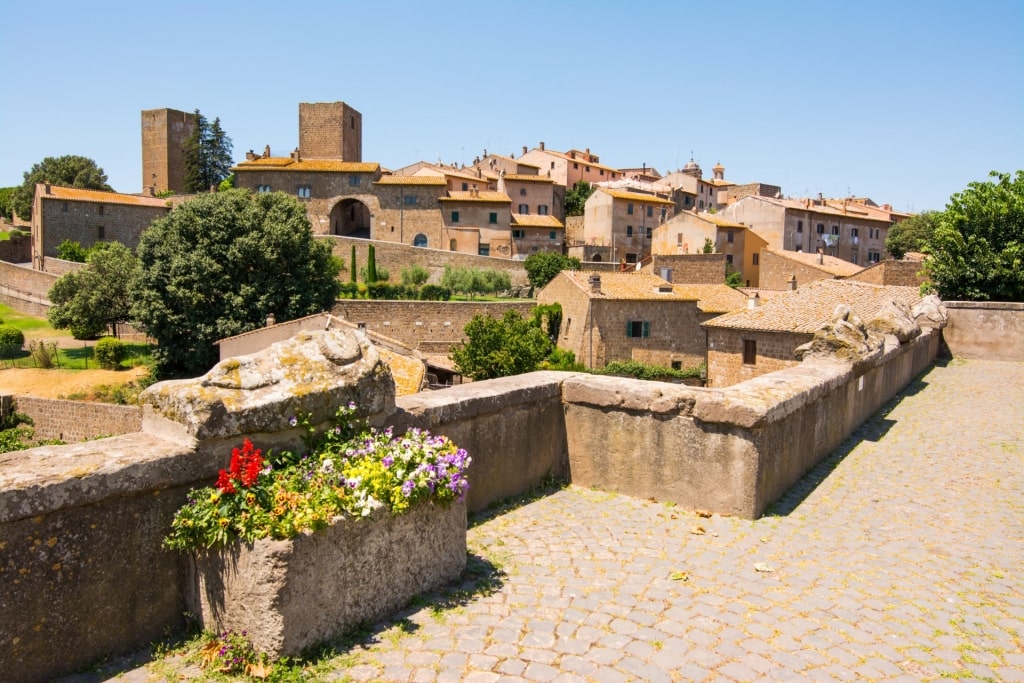
Viterbo
Once a rival to Rome as the seat of the Popes, Viterbo has preserved a medieval walled quarter. The Papal Palace and the Cathedral of Saint Lawrence hint at its former glory.
It’s one of the best day trips from Rome, just as a place to wander around, stumbling on hidden treasures. Or take a more formal guided tour to find out about sights such as the 12th-century Church of Santa Maria della Verità.
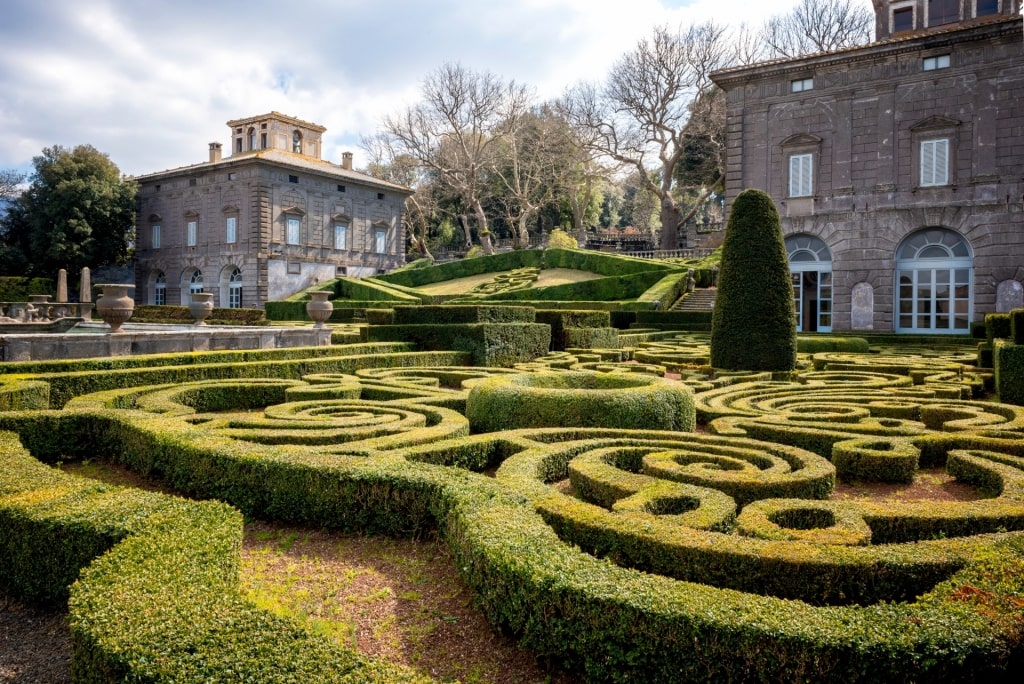
Villa Lante, Viterbo
A short tram ride from the center is Villa Lante, where no gardener will want to miss the “water gardens”. The hillside garden terraces, linked by fountains and cascades, are a delight.
The town, 90 minutes north of Rome, is also noted for its volcanic thermal springs, mentioned by Dante in “The Divine Comedy”. There are several open-air hot pools where you can soak while enjoying nature.
Monte Navegna e Monte Cervia Nature Reserve
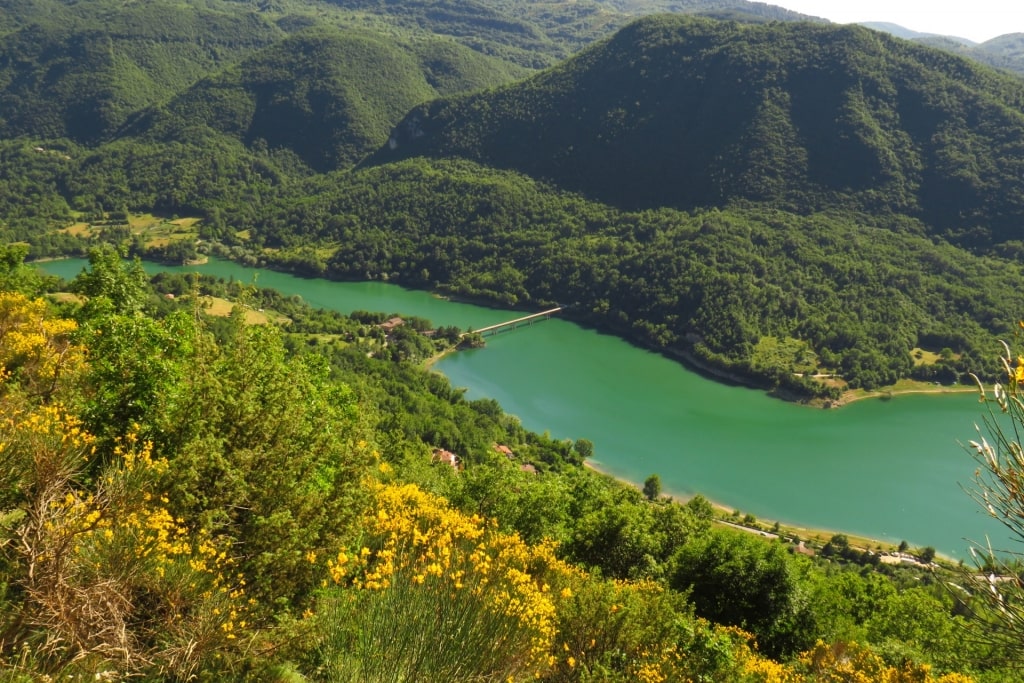
Monte Navegna e Monte Cervia Nature Reserve
Monte Navegna and Monte Cervia are two peaks in the Lazio region that are both more than 5,000 feet high. They stand amid the beauty of a natural reserve covering 50 square miles.
Both are under an hour from Rome and you can go hiking on well-marked, well-maintained trails. You’ll enjoy views of mountains, forests, lakes, and even the distant sea.

White storks
The reserve is a birdwatcher’s paradise, and even the birds must enjoy the natural beauty of this Lazio region. Expect to see species such as white storks, and even mammals such as wild boar or deer.
The local cuisine is another major draw, with cheese, and smoked meats being a specialty. Look out for pangiallo, a traditional Christmas cake full of nuts, fruits, cocoa, and honey.
Terni
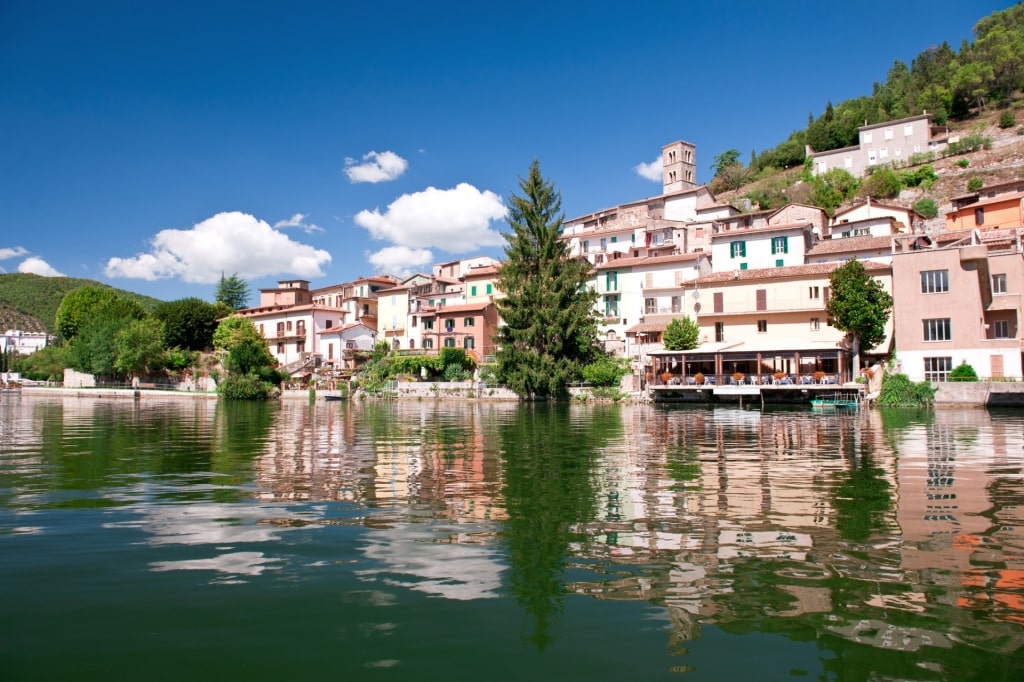
Terni
Bombed heavily in WWII, because of its industries, Terni has been rebuilt as a lively modern city, full of striking public art. However, it’s the Roman remains such as Fausto Amphitheater that are its major attraction.
Several significant churches from as early as the 13th century have also survived. Among them, the Bernini-designed Duomo stands out for its Baroque design and interior art.
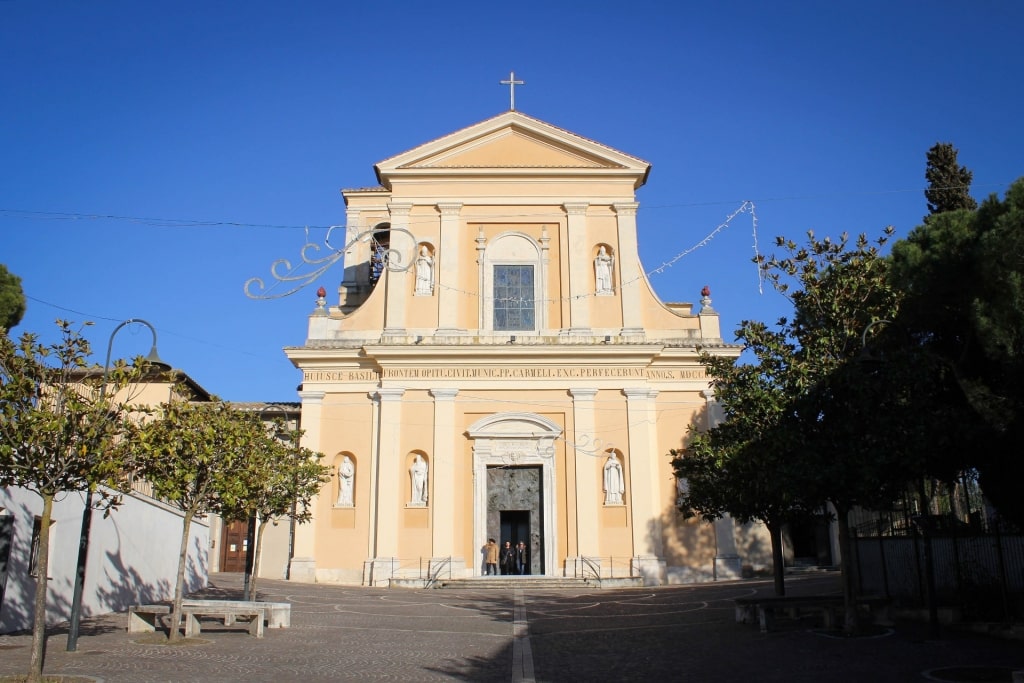
Basilica of San Valentino, Terni
Romantics will also want to see the Basilica of San Valentino, patron saint of lovers. He was the bishop of Terni, and the town is now known as the “City of Love”.
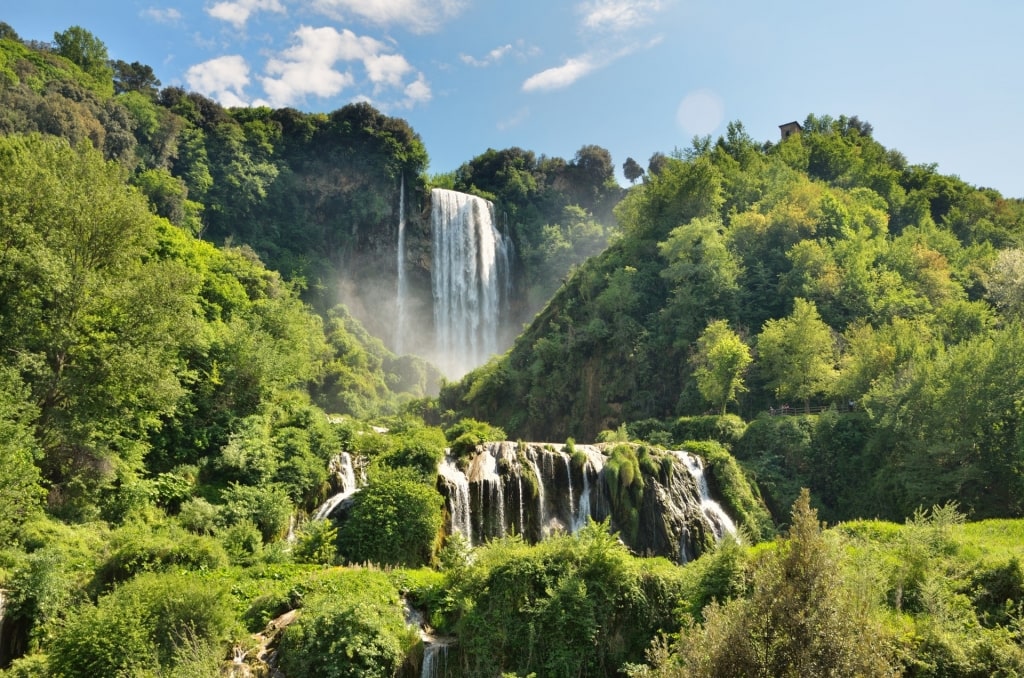
Marmore Falls, near Terni
Nearby are the Marmore Falls, the highest in Europe, and Lake Piediluco. This postcard-perfect lake comes to life during summer in Italy with boats, canoes, and water skiers.
Santa Marinella
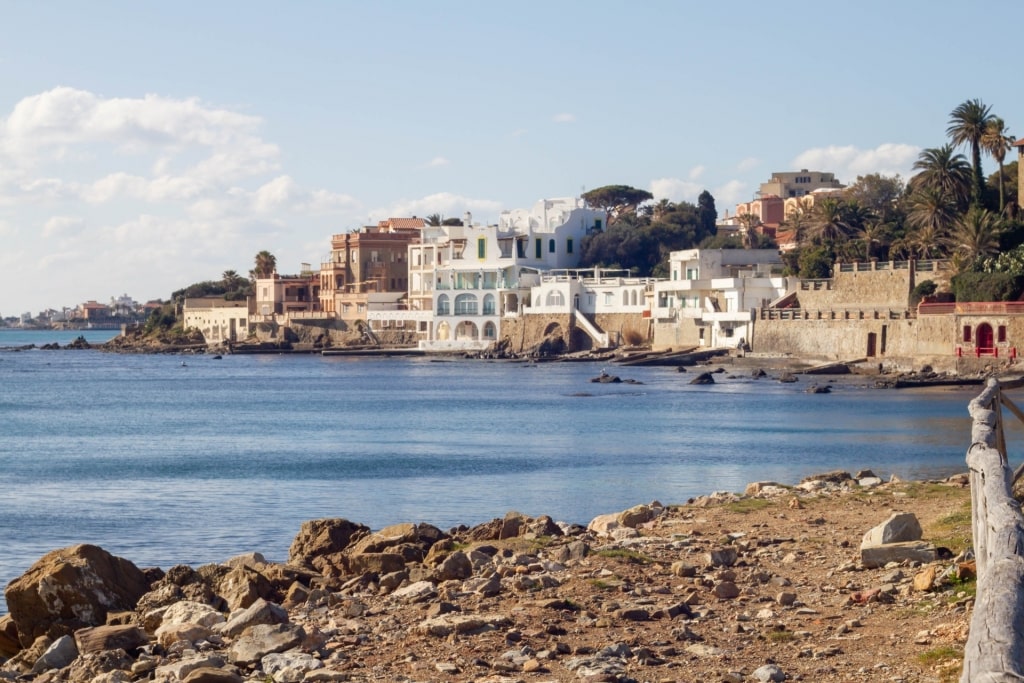
Santa Marinella
Just south of Civitavecchia, Santa Marinella is a seaside resort on the so-called “Etruscan Riviera”. Only an hour from Rome, it has a seafront lined with stylish Art Nouveau summer homes.
In the high season, the town’s sandy beach is understandably crowded as it is one of the best beaches near Rome. However, off-season the resort is surprisingly quiet, and a lovely place to escape from Rome for a day trip.
You’ll find some of the region’s best seafood restaurants here. Santa Marinella is still an active fishing port, and that shows in the quality of the produce.
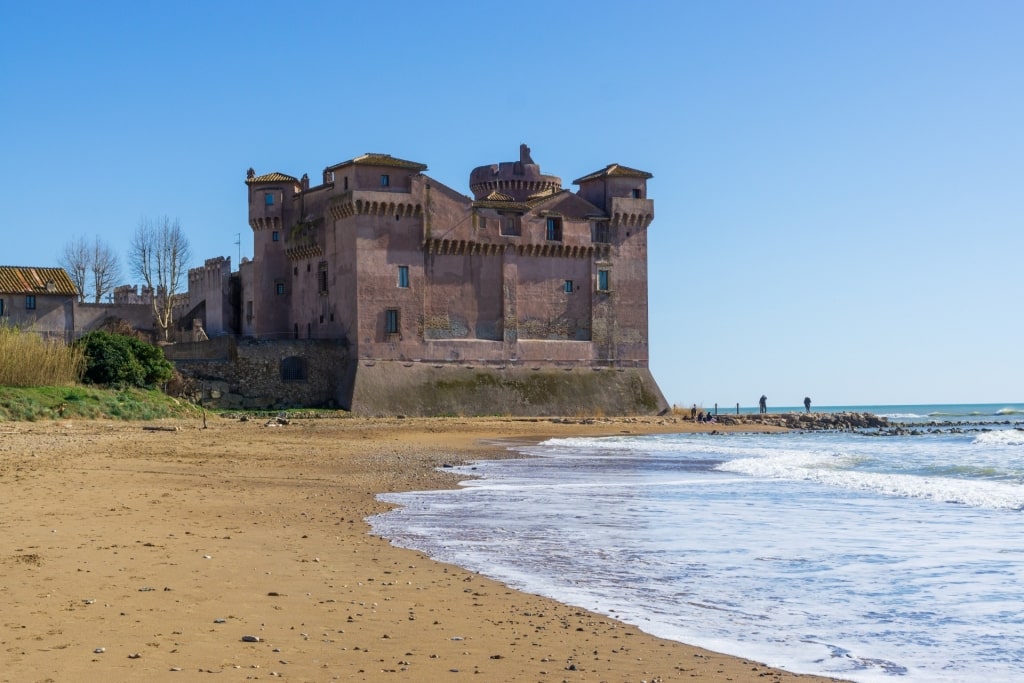
Santa Severa’s Castle, Santa Marinella
South of the town is the dramatic Santa Severa’s Castle, standing right on the shore to make a photographer’s dream image. Its Maritime and Ancient Navigation Museum is an evocative insight into the history of Mediterranean sea travel.
Genzano di Roma
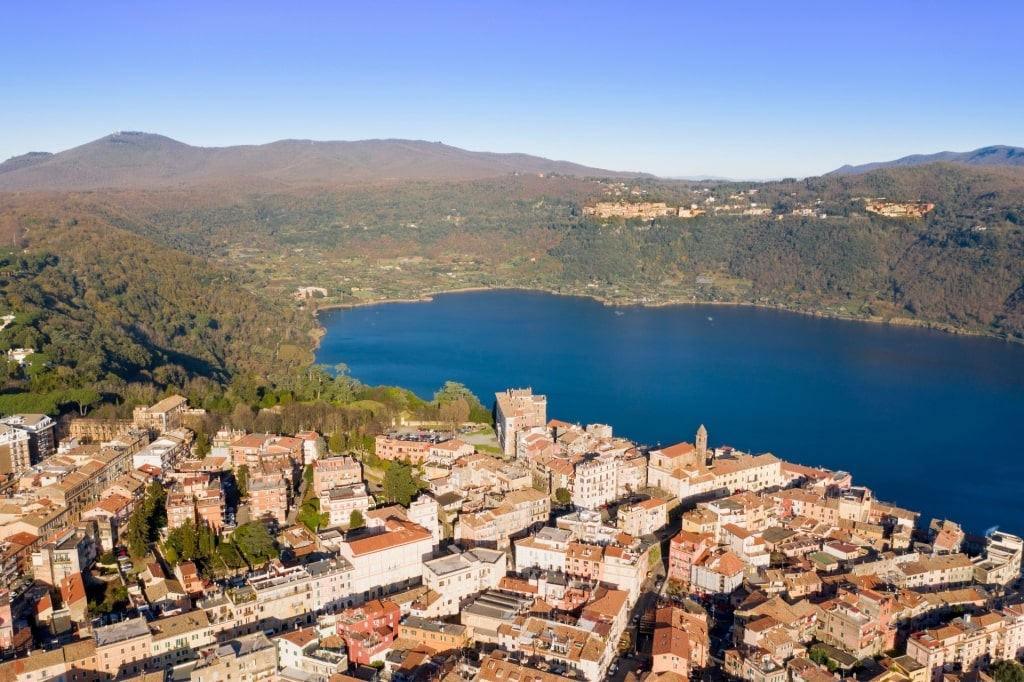
Genzano di Roma
Only 30 minutes from Rome, in the Alban Hills, Genzano di Roma is a charming medieval hill town long known for its wine, and food. Its scenic setting and many restaurants serving the local DOC Colli Lanuvini white white are the main attractions.
Take a walk up to the 17th-century baroque church of Santa Maria della Cima (Saint Mary on the Hill) to take in the views. The church itself is worth looking into for its frescoes and other art.
Genzano di Roma hosts a flower festival every June, Infiorata (The Flowering), when the town bursts into bloom. Take a boat across the lake to see more of the lovely countryside, so near, yet so far from the busy Italian capital.
Gran Sasso and Monti della Laga National Park
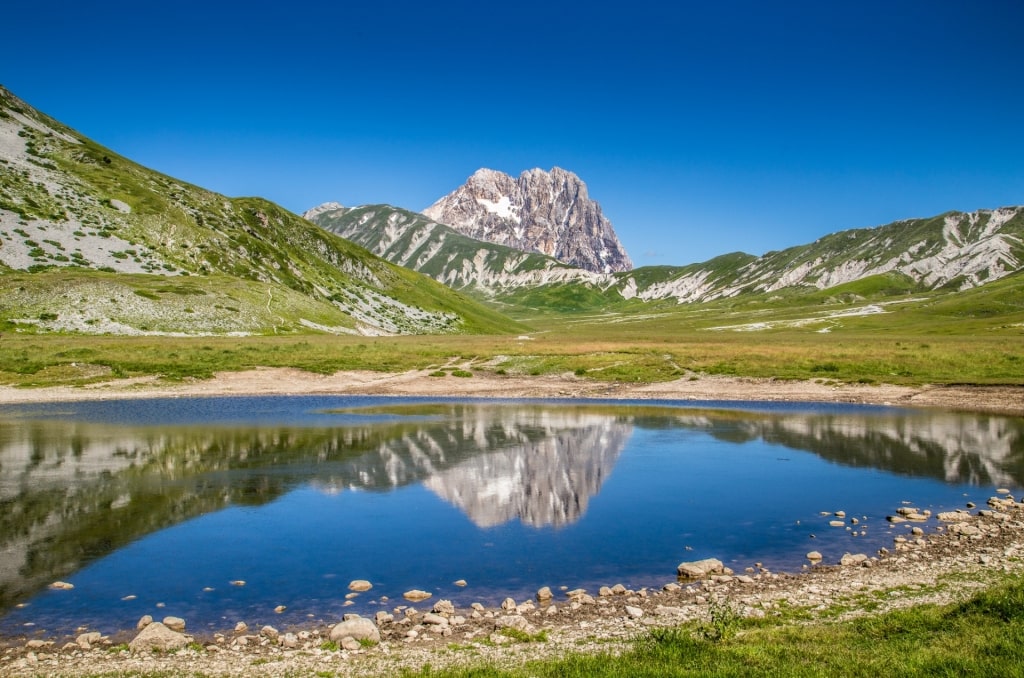
Gran Sasso and Monti della Laga National Park
Gran Sasso and Laga Mountains National Park protect some of the most scenic landscapes of the Apennines. Ninety minutes after leaving Rome, you can be hiking below Corno Grande, the highest peak on the Italian mainland outside the Alps.
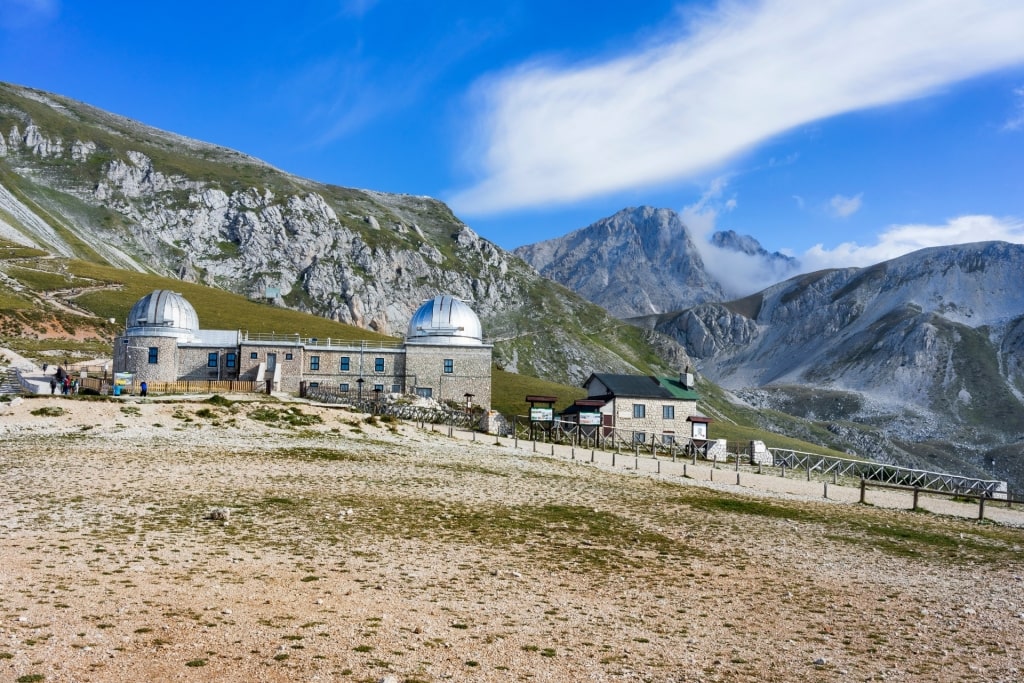
Campo Imperatore, Gran Sasso and Monti della Laga National Park
The park has a lush landscape with valleys, forests, waterfalls and lakes. Popular hikes include the climb up to Campo Imperatore, a high mountain plateau known as “Little Tibet” that’s a popular film location.
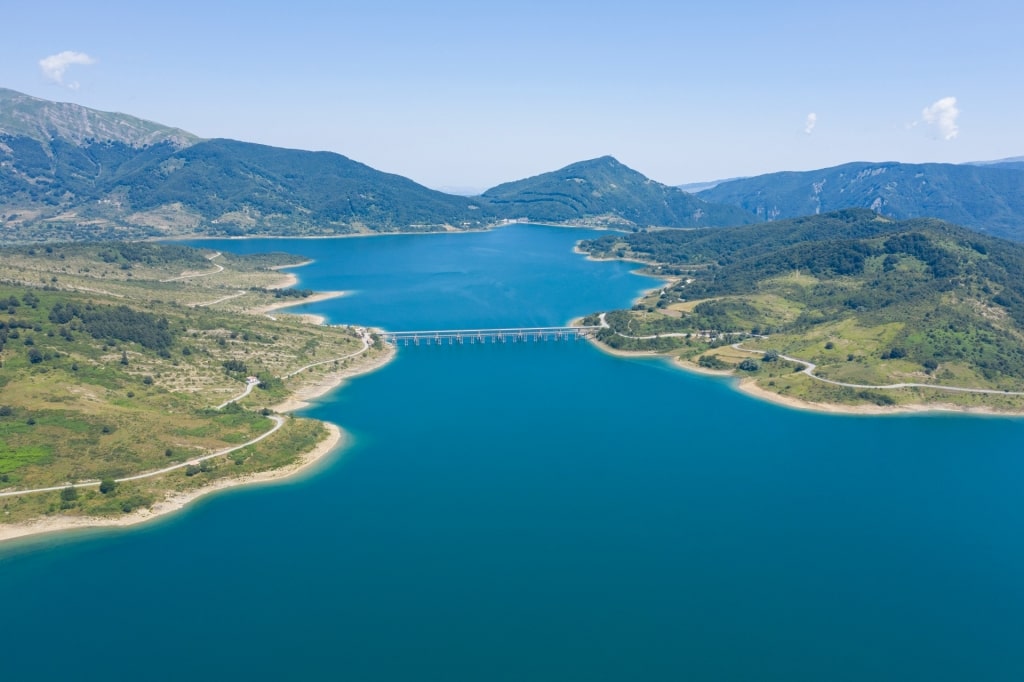
Lago di Campotosto
With an area of 778 square miles, there’s a lot to see and do in the park besides hiking. Lago di Campotosto, one of Europe’s largest man-made lakes, attracts thousands of migratory birds, and birdwatchers.
Sign up for an e-bike tour of the park to take in more views. Local restaurants also highlight why the regional food and drink is so famous.
Read: How to Spend 3 Unforgettable Days in Rome
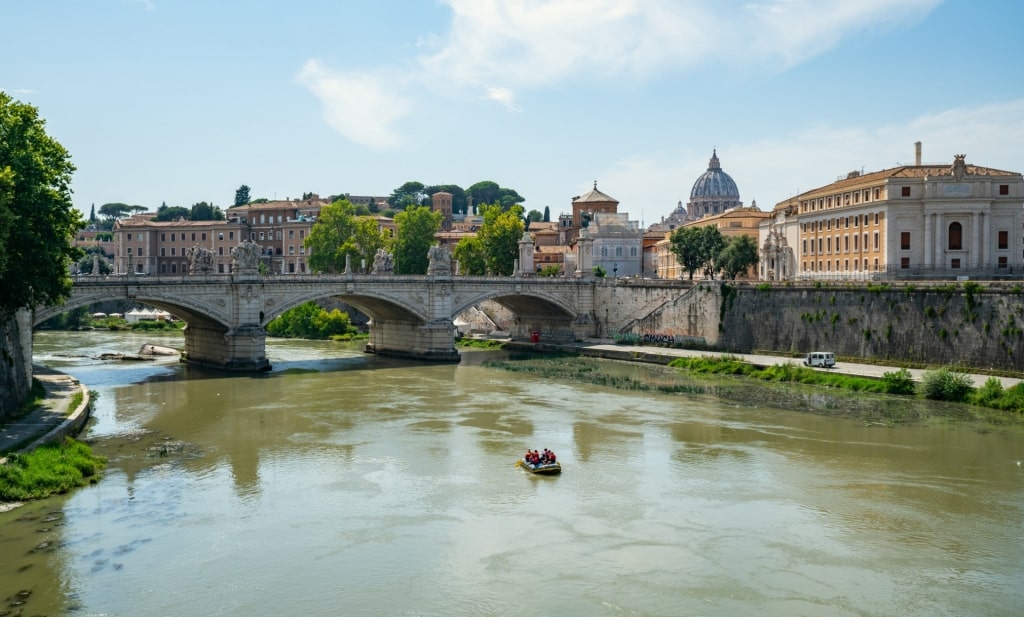
Tiber River
Has this guide to the 14 best day trips from Rome inspired you to visit the Eternal City? Then browse our cruises to Rome to find why they say all roads really do lead to the city.
